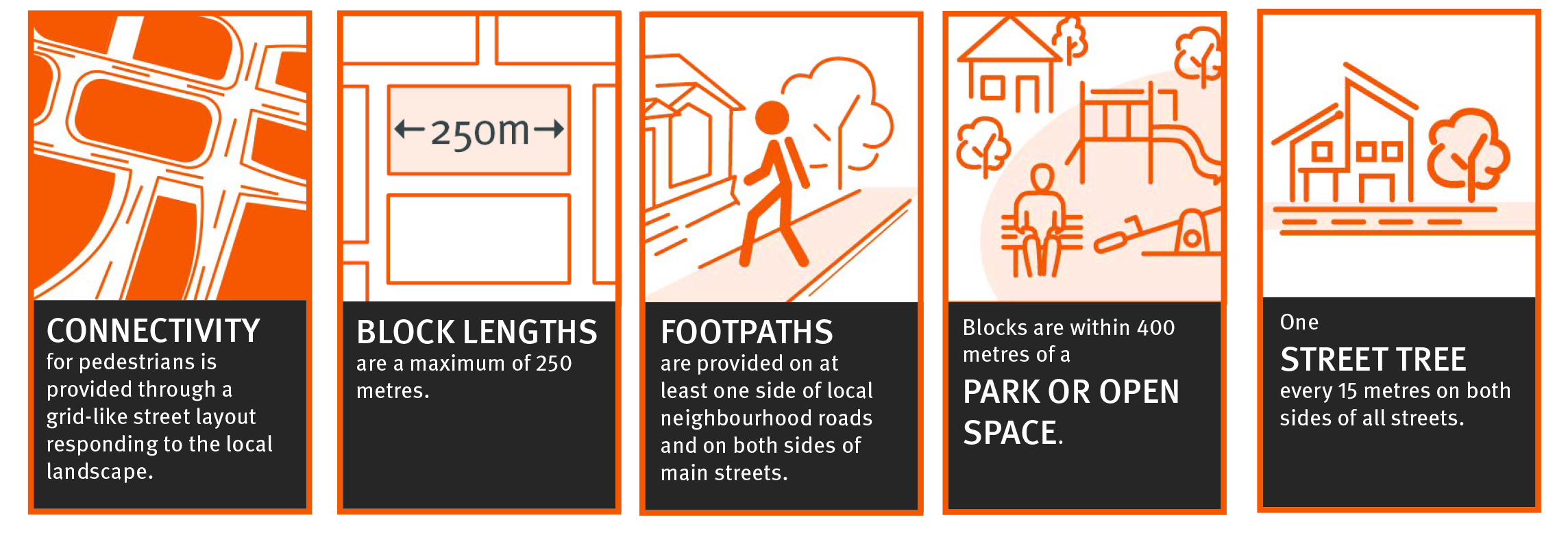Healthy and active communities
Our planning framework is about ensuring development in Queensland occurs in a way that helps create more liveable communities.
The COVID-19 pandemic has highlighted just how important our neighbourhoods can be in supporting the health and wellbeing of our communities. Planning and development can ensure new residential neighbourhoods are comfortable and convenient for walking and include parks and open space.
Now more than ever, Queenslanders appreciate the need for walkable neighbourhoods and access to local parks and open spaces. Safeguarding our health is the top priority of the Queensland Government and designing our local neighbourhoods to support more active communities plays a key role in promoting the health and wellbeing of Queenslanders.
For more information on healthy and active communities please contact us.
Walkable neighbourhoods
We undertook extensive consultation with the community, industry and local government about how effective neighbourhood design could support community health and wellbeing.
From this consultation, a model code and provisions were created to ensure new residential subdivisions deliver more walkable neighbourhoods.
These provisions are assessment benchmarks in the Planning Regulation 2017 that apply to certain development applications for new residential subdivisions (reconfiguring a lot).
All new residential subdivisions in Queensland will be assessed against benchmarks relating to:
- connectivity
- block lengths
- footpaths
- park or open space
- street trees

-
Assessment benchmarks are the standards and outcomes we want to see demonstrated by new development. Many local government planning schemes across Queensland are already aligned with these new assessment benchmarks.
Assessment managers must use these benchmarks to assess any new subdivision designs against. They have discretion to determine the extent to which the benchmarks are relevant to an application for a new subdivision. This allows for flexibility to deal with the many different circumstances local governments across Queensland may encounter.
A planning scheme may also set benchmarks that achieve a higher standard than the Regulation prescribes, for example, increased pedestrian pathways in very high use areas. As such, where provided, additional requirements in the planning scheme are also relevant assessment benchmarks.
An assessment manager must provide a statement of reasons as part of the decision notice.
-
Many existing residential neighbourhoods are not conducive to walking.
Retrofitting existing environments to improve walkability can require significant investment involving many challenges. These challenges are not insurmountable and provide good potential for return on those investments, including health and environmental benefits.
The Walkability Improvement Tool provides built environment professionals, such as town planners, surveyors and engineers, with a methodology to identify and prioritise walkability improvements in existing neighbourhoods.
This tool helps determine how pedestrian-friendly an existing residential neighbourhood is and how to achieve a cost-effective approach to implementing identified improvements as, and when, funding becomes available.
-
A range of technical guidance material is available to support local government and developers in planning for and delivering walkable neighbourhoods including:
- Walkable Neighbourhoods: Application overview
- Walkable Neighbourhoods: Supporting information for the walkable neighbourhoods assessment benchmarks in the Planning Regulation 2017
- Street Design Manual: Walkable Neighbourhoods prepared by the Institute of Public Works Engineering Australasia Queensland (IPWEAQ)
- Model Code for neighbourhood design
Last updated: 29 Aug 2022
